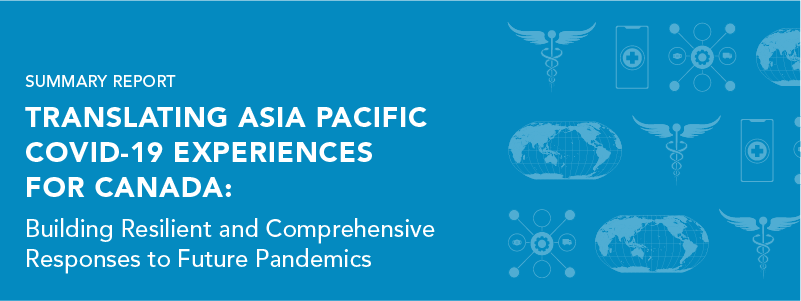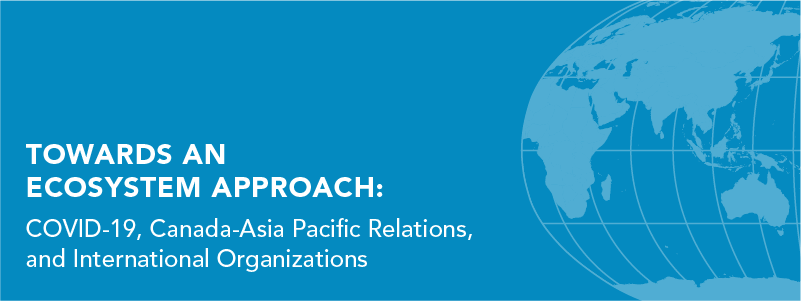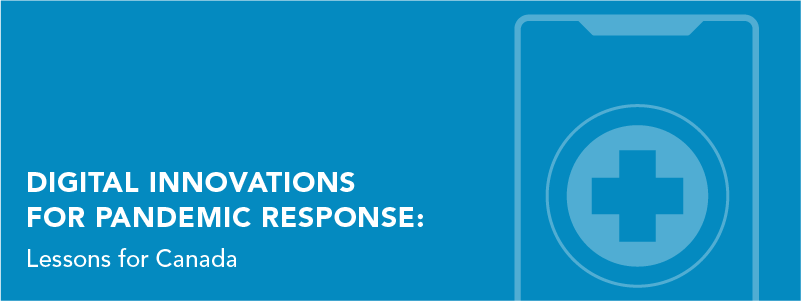The COVID-19 pandemic has proven an exacting test for public health systems, economies, and societies worldwide. In Canada, the pandemic has claimed more than 36,000 lives, especially among the elderly. At the same time, Canada’s economy has experienced a historic slump, with GDP contracting by 4.5 per cent in 2020 compared to 2019.
Now in its third year, Canada and others worldwide continue to battle both disease transmission from new variants such as Delta and Omicron, and lingering negative effects of economic shutdowns and other restrictions put in place to protect lives. To better prepare for similar health crises in the future, it is crucial that Canada evaluate its own COVID-19 challenges and shortcomings and that it learns from the experience, knowledge, and preparation in pandemic responses from other countries.
Thanks to funding from the Public Health Agency of Canada, the Asia Pacific Foundation of Canada examined the diverse COVID-19 experiences of multiple economies in the Asia Pacific region in the first year of the pandemic (2020), with the objective of drawing key lessons for Canada. In comparison to North America and Europe, several Asia Pacific economies – despite their geographical proximity to the pandemic’s epicentre in Wuhan, China – experienced relatively lower rates of transmission and death, particularly in the early phase of the pandemic in 2020, which caught many Western states, including Canada, by surprise.
Our analyses provide policy recommendations for Canada, including valuable structural recommendations to help the federal government reform Canada’s pandemic preparedness and build comprehensive response strategies to health crises in the future. APF Canada's researchers examined the first year of the pandemic across four focus areas, each with its own report:

Summary Report: Including the research, analysis, and key findings of four policy reports developed by the Asia Pacific Foundation of Canada, dissecting the experience of Asia Pacific economies as they responded to COVID-19. Read the report in English or French.

International Engagement in Global Health: Examining pandemic responses from prominent international organizations that pivoted their programs, research, and funding to address the challenges of COVID-19. Researchers focused on international, regional, and subnational organizations active in Asia Pacific economies that fulfilled diverse roles complementing global and national response efforts. Read the report.

Cross-border Trade Flows: Providing an overview and analysis of the pandemic's impact on global value chains (GVCs) and the trade of medical products, such as personal protective equipment (PPE) and vaccines, between Canada and the Asia Pacific region. Read the report.

Digital Innovation for Pandemic Response: Exploring the development and rollout of digital technologies deployed in pandemic response and health care. This report also identifies and examines the enabling policy, legal, institutional, and societal factors facilitating the development and adoption of digital tools for public health. Read the report.

Public Health and Pandemic Response: Examining the institutions, public health policies, and legislation either in place before COVID-19 or rapidly developed and modified at its onset. It identifies and provides an in-depth analysis of the factors in pandemic response that allowed Australia, Japan, New Zealand, Singapore, South Korea, Taiwan, and Vietnam to bring COVID-19 under control and prevent heavy death tolls through 2020. Read the report.
Watch the video encore presentation of our March 30, 2022 launch event for this series, Pandemic X: Are We Ready for 'The Next Time?'




